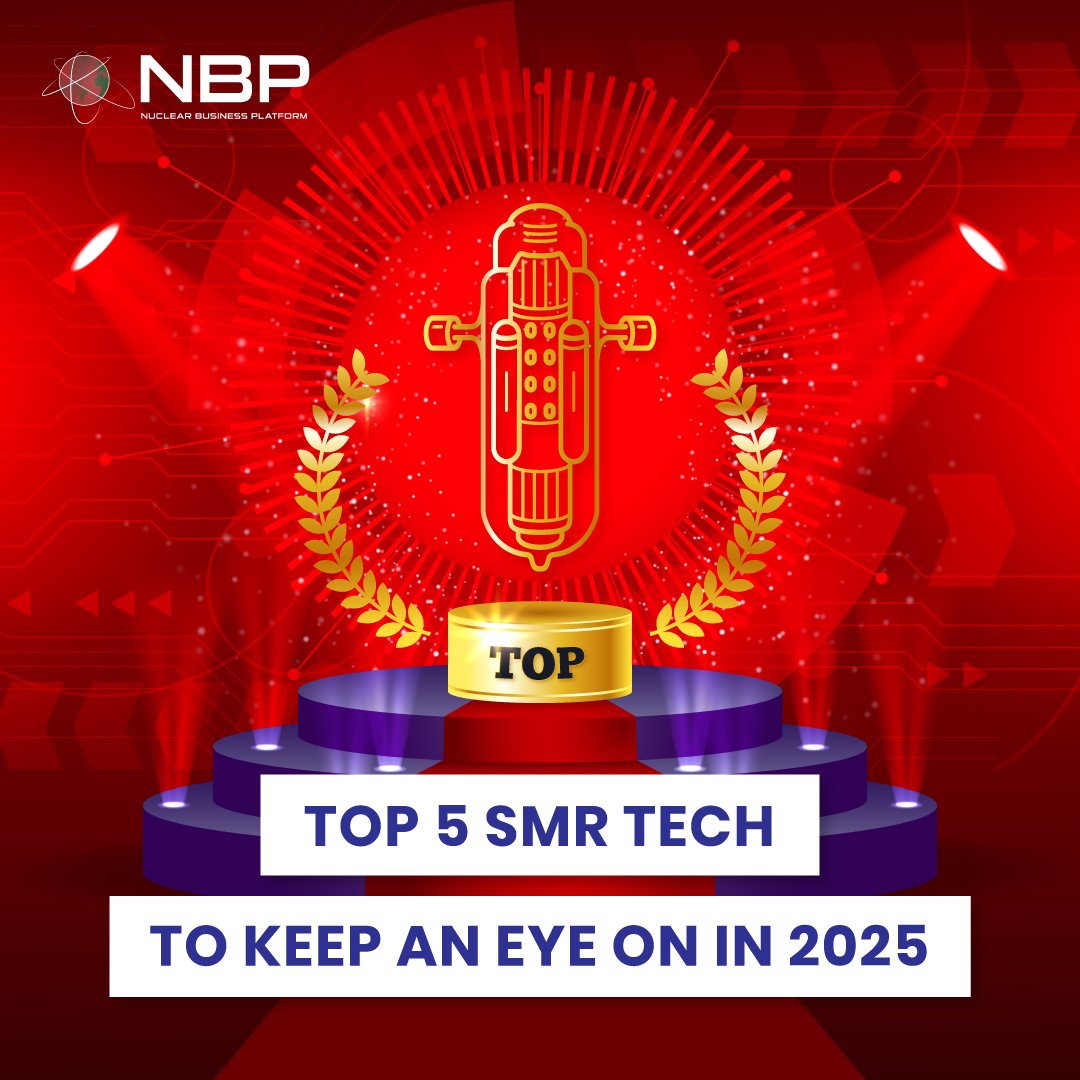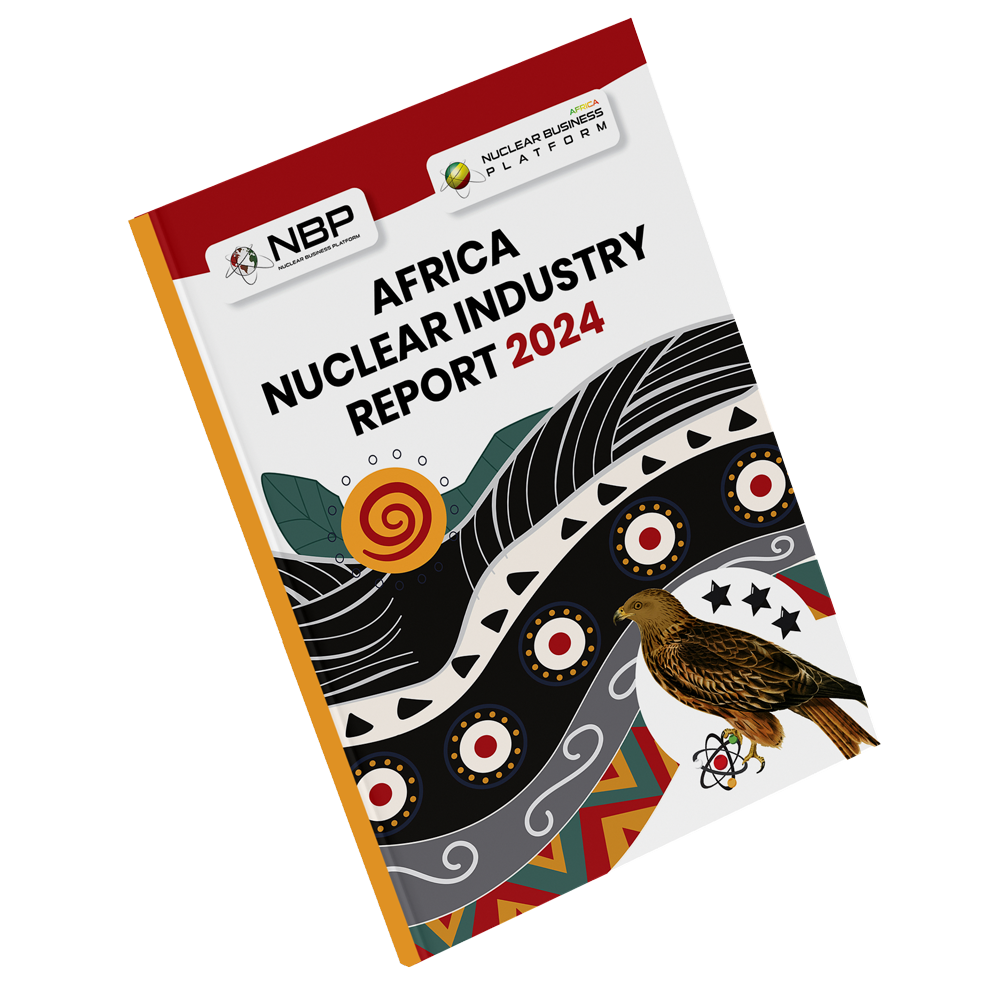Top 5 SMR Tech to Keep an Eye on in 2025
The small modular reactor (SMR) market is poised for steady growth, fueled by the global demand for sustainable and reliable energy solutions. Valued at $6.3 billion in 2024, the market is projected to grow to $6.9 billion in 2025, reflecting a compound annual growth rate (CAGR) of 9.1%. This upward trend is expected to continue, with the market anticipated to reach $13.8 billion by 2032 at a CAGR of 9.1%, driven by energy security needs, supportive regulations, rising electricity demand—particularly from datacenters and AI infrastructure—carbon emission reduction goals, and the shift toward decentralized power generation.
Contributing to this escalation are energy security imperatives, supportive regulatory environments, rising electricity demand—particularly from the rapid proliferation of datacenters and artificial intelligence (AI) infrastructure—commitments to carbon emission reduction, and the increasing reliance on decentralized power generation. SMRs, with their modular construction, advanced safety profiles, and adaptability, are revolutionizing nuclear energy, enabling applications ranging from decarbonizing coal-reliant regions to powering remote communities and industrial operations. In 2025, five leading firms are spearheading this shift, supported by significant public and private investments, strategic partnerships, and pioneering technologies. This article analyzes their key initiatives, financial underpinnings, and global impact, underscoring their vital contributions to the evolving landscape of advanced nuclear energy.
1) NuScale Power Corporation:
NuScale Power Corporation, headquartered in Corvallis, Oregon, is a trailblazer in advanced nuclear technology, specializing in small modular reactors (SMRs). The company went public in May 2022 through a merger with Spring Valley Acquisition Corp., a special purpose acquisition company, marking a significant step in its growth. NuScale is driving multiple large-scale projects across Central and Eastern Europe, with a flagship initiative in Poland. In February 2022, it partnered with KGHM Polska Miedź SA to deploy its VOYGR-12 SMR power plant, featuring 12 NuScale Power Modules at 77 MWe each, capable of generating up to 924 MWe of carbon-free electricity. This project, Poland’s first foray into nuclear energy, targets operational status as early as 2029 and aligns with the country’s decarbonization efforts, bolstered by its 2021 Powering Past Coal Alliance (PPCA) membership at COP26. Poland, historically coal-dependent (70% of electricity in 2020 per Forum Energii, dropping to 60-65% by 2023 with renewable gains), sees this as a pivotal shift.
Beyond Europe, NuScale expanded into Africa in August 2024, signing an agreement with Ghana and Regnum Technology Group during the U.S.-Africa Nuclear Energy Summit in Nairobi, hosted by the U.S. Department of Energy. This deal, marking Ghana’s inaugural commercial nuclear project, involves deploying a VOYGR-12 SMR with support from Nuclear Power Ghana, which will establish a subsidiary to own and operate the plant. As of March 2025, the project is in early planning, with no firm construction timeline. Financially, NuScale bolstered its position in December 2024 with a $227.7 million cash infusion from warrant exercises, enhancing its ability to execute these ambitious international ventures and reinforcing investor confidence in its scalable, clean energy solutions.
2) GE Hitachi Nuclear Energy (GEH):
GE Hitachi Nuclear Energy (GEH), based in Wilmington, North Carolina, and now part of GE Vernova, builds on over six decades of boiling water reactor (BWR) expertise since the 1950s. Its latest offering, the BWRX-300, is a 300 MWe SMR designed for affordability and rapid deployment, using natural circulation and passive cooling for safety (operable without power or intervention for seven days). Targeting coal plant replacements, it’s advancing in Poland and Romania with a modular construction timeline of 24-36 months. The BWRX-300 slashes capital costs by up to 60% per megawatt compared to traditional reactors, thanks to its streamlined design and reduced material use (50% less concrete and steel).
In January 2024, GEH secured a £33.6 million (approximately USD 42.7 million) grant from the UK Department for Energy Security & Net Zero under the Future Nuclear Enabling Fund, supporting its UK deployment as part of the nation’s 24 GW nuclear goal by 2050. As of March 2025, the BWRX-300 is progressing through Step 2 of the UK Generic Design Assessment (started December 2024) and is a contender in Great British Nuclear’s SMR competition. Globally, GEH’s BWR technology powers 67 licensed reactors in ten countries, including the U.S., Japan, and Sweden, backed by thousands of nuclear-related patents. Key projects include Canada’s Darlington site (targeting 2028 operation), Poland’s fleet expansion (regulatory approvals in 2025), and a U.S. funding bid for Clinch River deployment by 2033, showcasing GEH’s robust market presence and growth trajectory.
3) Westinghouse Electric Company:
Westinghouse Electric Company, a nuclear industry leader, is pushing boundaries with its eVinci™ microreactor, a transportable “nuclear battery” producing up to 5 MWe and up to 13 MWth total, with usable heat depending on configuration, from a solid core fueled by TRISO pellets. Designed for simplicity with minimal moving parts, it uses heat pipe technology and passive heat transfer, enabling over eight years of full-power operation without refueling. Fully assembled at its Etna, Pennsylvania facility, the eVinci requires less than 2 acres and can be deployed in under 30 days, serving industrial, remote, or disaster-relief needs.
In November 2024, Westinghouse teamed up with UK-based CORE POWER to design a floating nuclear power plant (FNPP) using the eVinci, targeting coastal and maritime energy solutions. In December 2024, it achieved a milestone when the eVinci’s Advanced Logic System (ALS) Version 2 I&C platform became the first microreactor system to earn U.S. Nuclear Regulatory Commission (NRC) approval, enhancing safety and autonomy with its FPGA-driven, software-free design. As of March 2025, Westinghouse is preparing for a 2026 test at Idaho National Laboratory, with commercial deployments planned by 2029, including a Saskatchewan pilot and FNPP projects with CORE POWER and Prodigy Clean Energy, positioning it as a versatile player in niche nuclear markets.
4) TerraPower:
Founded in 2008 by Bill Gates and private sector innovators, TerraPower, based in Bellevue, Washington, has shifted from traveling wave reactors to its Natrium sodium-cooled fast reactor. In October 2020, it secured $80 million in initial U.S. Department of Energy (DOE) funding via the Advanced Reactor Demonstration Program (ARDP)—one of two competitively selected projects alongside X-energy’s Xe-100. The DOE has committed up to $2 billion, with TerraPower expected to match a portion, and private funds exceeding $830 million by 2022. The Natrium, offering 345 MWe and peaking at 500 MWe with molten salt storage, broke ground in June 2024 near PacifiCorp’s retiring Naughton coal plant in Kemmerer, Wyoming. Non-nuclear construction (e.g., sodium test facility) advances post a January 2025 Wyoming permit, with NRC approval expected by December 2026 and operation by 2030.
Strategic partnerships with KBR and HD Hyundai in 2025 enhance global deployment, while HALEU fuel deals with Centrus and ASP Isotopes address past delays. This coal-to-nuclear project will power ~400,000 homes and create 250 permanent jobs, cementing TerraPower’s role as a leader in advanced nuclear innovation with significant public-private backing.
5) X-Energy:
Founded in 2009 at Rockville, Maryland, X-Energy develops the Xe-100, a high-temperature gas-cooled reactor (HTGR) delivering 80 MWe per unit (200 MWth), scalable to 320 MWe in a four-pack or 960 MWe with 12 units. Fueled by its proprietary TRISO-X (produced at an Oak Ridge pilot since 2016 and a forthcoming TX-1 plant targeting 8 metric tons/year by 2027), it excels in extreme conditions. In October 2024, Amazon’s Climate Pledge Fund led a $500 million Series C-1 round with investors including Ares Management and NGP, potentially others like Ken Griffin affiliates and the University of Michigan. Reports suggest it closed at $700 million by February 6, 2025, with additional investors like Segra Capital, Jane Street, and Emerson Collective, pending confirmation. Amazon supports a 320 MWe Xe-100 project with Energy Northwest in Washington (expandable to 960 MWe by 2039), part of a 5 GW nuclear commitment, alongside over $2 billion in combined DOE-private funding via ARDP.
The Dow Seadrift, Texas demo targets 2030, integrating steam for industrial use, while TX-1 secured a $148 million tax credit in 2024, with $40.8 million in site prep by December 2024. X-Energy Canada pursues licensing, and Amazon’s investment—beyond typical power deals—marks a bold private-sector push, positioning X-Energy as a key player in America’s nuclear resurgence as of March 13, 2025.
As the energy transition gains momentum, frontrunners in the SMR sector are not just responding to global demands—they are shaping the trajectory of power generation. In 2025, their advancements herald a new era for nuclear energy, blending adaptability and sustainability to tackle pressing challenges as countries worldwide signal growing interest in these technologies. Their collective vision extends beyond innovation, forging a path toward a resilient, decarbonized future and redefining the role of technology in securing energy stability on an increasingly engaged global stage.



